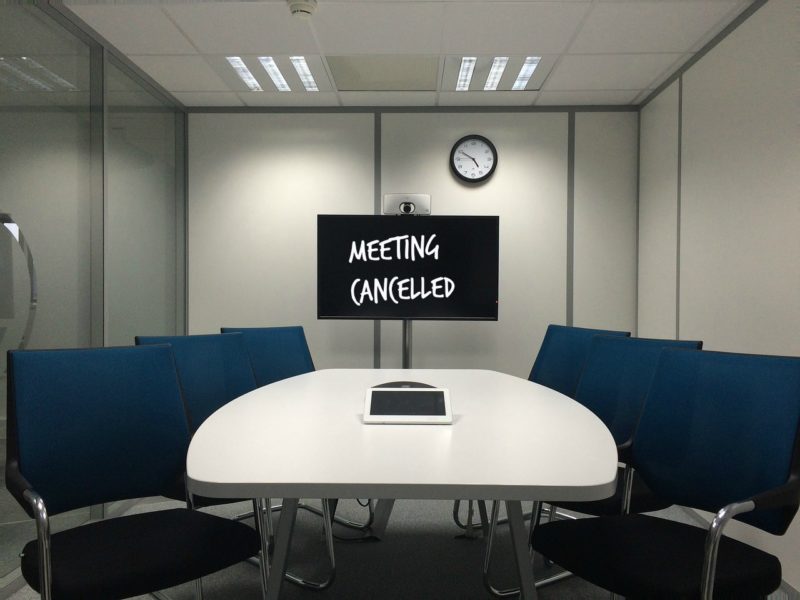
If you work in an organization or business, or volunteer regularly in the community, how many hours do you spend weekly in meetings? Count them up and I think you’ll agree, meetings are America’s growth industry! And because of this, improving meetings is the low-hanging fruit for bettering our productivity.
What if we could shift just ten percent of them from gross to great?
Have you ever had the experience of crashing to finish your work, end that telephone call, or put aside something you really wanted to do, in order to rush to a meeting? Then you arrive, watch people straggle in and spend their time waiting, day-dreaming, gazing with false fascination at their cell phones. The meeting leader isn’t even there. And the place feels like a morgue.
That meeting is probably dead before it starts.
We humans are highly adaptable and we shape our expectations based on experience. We learn that the weekly planning meeting for “Project Y” is going to start late (so don’t come on time), its purpose will be cloudy, and conversations will zig this way and that. Or maybe the group will be ramrodded through the agenda like an army platoon marching in lock-step, people will not offer what they really think, and the meeting will end in confusion with no clarity about who is going to do what. We learn to expect the worst and then our low expectations are met!
As I prepare to teach a workshop on facilitation to faculty at a local college, I’ve re-discovered a secret truth: the key to a successful meeting often lies outside the meeting itself. To quote a consulting colleague of mine, who used this phrase as if it were a quote from the Bible, context is king. What he meant is that the set-up of a meeting will determine its success. Elements include having clarity about its intent, knowing how a meeting fits into the organizational landscape, understanding how results will be used, and choosing the right structure.
Here are a few things to think about before you sit down to craft an agenda or launch a meeting:
Why do you need to have this meeting?
Do you need to report out on new developments? If what you’re planning to share can be read, spare me the agony. I can read far more quickly than I can listen. And never read me the treasurer’s report or the secretary’s report, (our garden club used to think this was necessary), unless you have the dramatic flair of a stand-up comic. Nothing deflates meeting momentum like listening to someone read an information document (exceptions allowed).
But it doesn’t have to be like that. A great meeting is a way to build relationships, inspire synergy, increase engagement through participation, learn from a variety of viewpoints, get everyone on the same page, make essential decisions, and even have fun!
What decisions, coming out of the meeting, will make your heart sing?
Or, if not sing, at least beat happily. Be clear on what you need to do or decide, but don’t get greedy. If you try to do too much, and end up having to jam your agenda with decisions to be made every five to ten minutes, (more about that in a future post), I know your meeting’s not likely to work. (If decisions were that easy to make, why aren’t they already made?)
Is there a hidden agenda?
Be honest. Sometimes I’ve entered a group in which there were so many elephants in the room, you could smell the poop. A frank discussion with your planning team or facilitator about the background of experiences people will be bringing to the meeting, and what’s at stake, is critical. Don’t surprise your facilitator (I speak from painful experience).
What format will work best?
Sometimes we get stuck thinking we need to have a 90-minute monthly meeting because we’ve always scheduled a 90-minute meeting. What if the heart of the work could be accomplished in ten minutes? Or maybe a deeper discussion could be better done in a two-day offsite retreat?
 Who needs to be there, really?
Who needs to be there, really?
Don’t sweep the organization inviting everybody, (unless going to a meeting is the core work of your organization), but do make sure that the right people are there. Even if people are “required,” why not treat them as volunteers and make it attractive and alluring to attend? Market your meeting. Enroll people in the benefits. Treat them as if they have choices about what to do with their time (they do), rather than as drones. (Maybe a poor choice of words these days.)
My colleague, visual facilitator extraordinaire Claire Bronson, created a series of fun cartoons we attached to emails in advance of a retreat we were co-directing. Even though participants had already registered, we wanted them to feel jazzed about coming.
Where will you meet?
Typically, you’ll meet close to where participants work, maybe down the hall in the conference room. But that cavern-like dungeon of a meeting room without windows at the back of the building? Not so good. Environment matters. (Look for good light, air, and quiet.)
Occasionally, it may help to go off-site. I worked with a group of executives who went brain-dead when they met in the executive conference room or similar white table-clothed hotel room. They needed to break the routine, be able to walk about, and slump in comfortable chairs. We started meeting in peoples’ homes and at a beautiful retreat site; conversations improved immeasurably leading to a marked difference in the group’s performance.
Do you need a facilitator?
Often not. You, as board chair, program manager, vice president, or volunteer, may be perfectly capable of running a good meeting. But if it’s not your strong suit, it’s OK to ask a member of your team to facilitate the meeting, or bring someone in from outside, so you can be free to participate with the group.
A facilitator can be particularly useful when issues at a meeting are likely to be contentious, stakes are high, and competing factions will be attending. Or sometimes you may want a facilitator to give your off-site a special boost. If you’re unsure whether you need a facilitator, I’m happy to help you think it out.
(Truth in lending, I do this professionally).
What’s next?
The above is just for starters. I haven’t talked about how you plan the meeting, run the meeting, or order muffins. We can talk about this later! Just make sure that your meeting has its best possible chance for success, before it even starts.









